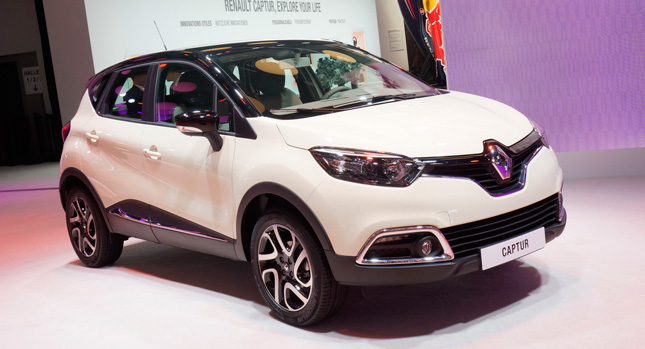Looking out on the increasingly-crowded roadways of Europe (they say there’s no money left, but many people continue to be buy new cars), you begin to notice that there are a lot of small and compact crossovers out and about.
They are driven around towns, where they take up no more space than the hatchback they are based on, except vertically. These crossovers get tough-looking plastic body cladding, raised suspension and chunky dimensions to give buyers the impression that they’re driving something really capable.
However, a problem arises here. Very few of these so-called crossovers (or CUVs) actually have optional all-wheel drive, and even if they do, it’s an options box which is ticked by very few of their buyers.
This begs the question “Why bother?” with what is basically a marketing scheme designed to fool downsizers into thinking they are in a bigger car, for which they are consequently charged more. Nobody seems to be particularly keen to point out that these crossovers, while slightly tougher than their regular hatch brethren, don’t really justify their price premium, or their existence for that matter.
Let’s look at it another way. If a highly-intelligent alien with ultra-advanced logical and critical thinking were to come to earth, do you think it would understand the necessity for a front-wheel drive SUV-esque model? I think not. If aliens can and do understand humor, this would be the time to see it.
For example, take the latest Renault Captur, a very handsome-looking small crossover for the European market. It is based on the new Clio, and again, is not offered with all-wheel drive. Why would you buy it, and not the regular Clio, if speed, handling, efficiency, comfort and price (not necessarily in that order) are all in its favor.
I will now list some of the disadvantages of these so-called crossovers. The first thing which suffers is efficiency, since these crossovers share their entire engine lineup with the standard hatch on which they’re based – the same engines have to push around more weight, as well as a taller body which has more drag. Cornering takes a hit too, because of the higher center of gravity, as does the comfort level which is lower because of the need to fit stiffer springs to counteract more pronounced body roll in corners. General performance is also affected due to the same reasons.
Sadly, instead of giving up on this silly trend, the manufacturers are heavily promoting it, and why not, if they can sell more of the same car, we don’t blame them for taking advantage of people’s lack of time to be informed (ignorance is a life choice) and selling them what they think they want, instead of what they actually need. If not all, most automakers are crossover-crazy right now, but I just think it’s a pointless waste of money and showroom floor. If you need an SUV, just go out and buy one. Don’t go out buying a raised hatchback, and in doing so, fooling yourself and spending more than you should.
There is also one more aspect to take into account. We now have manufacturers that don’t really have a lot of experience in building off-road vehicles entering the market, hoping to make a buck in these tough times. Why not save the research and development costs and make the rest of their range of cars better?
I know this is an extreme point of view, and it may be bashed and criticized. That isn’t really relevant, because denial, unfounded arguments and complacency are what got us in this mess in the first place. Sadly, things have already gone too far, and the fakeUV is here to stay and flourish, because people want something different, regardless of what that may be.
Automakers are very happy to oblige and fill the unsaturated market sectors. If things keep heading in this direction, we may all be driving crossovers in the near future, against our will and better judgment… Audi seems to think so.
By Andrei Nedelea
PHOTO GALLERY






